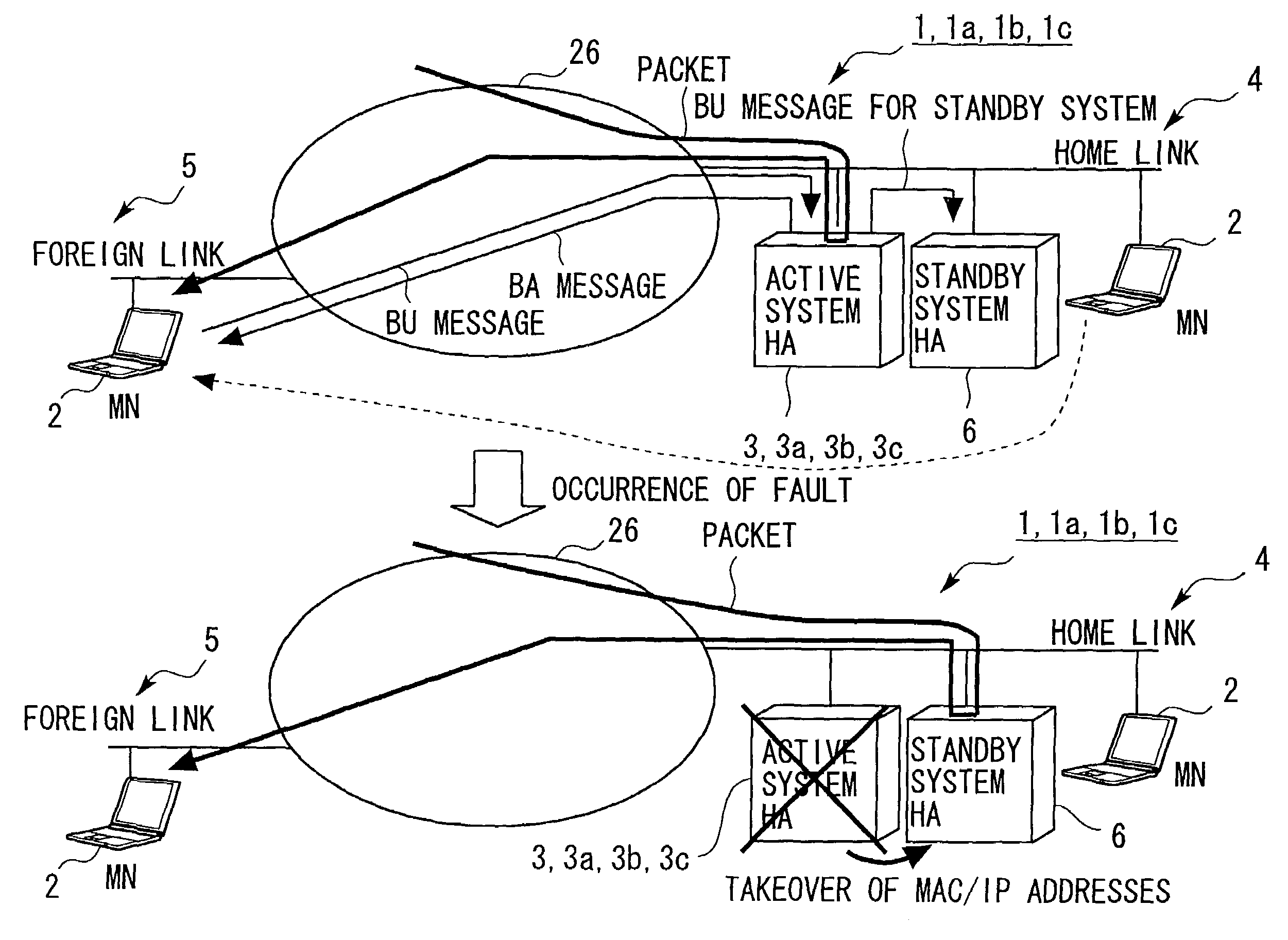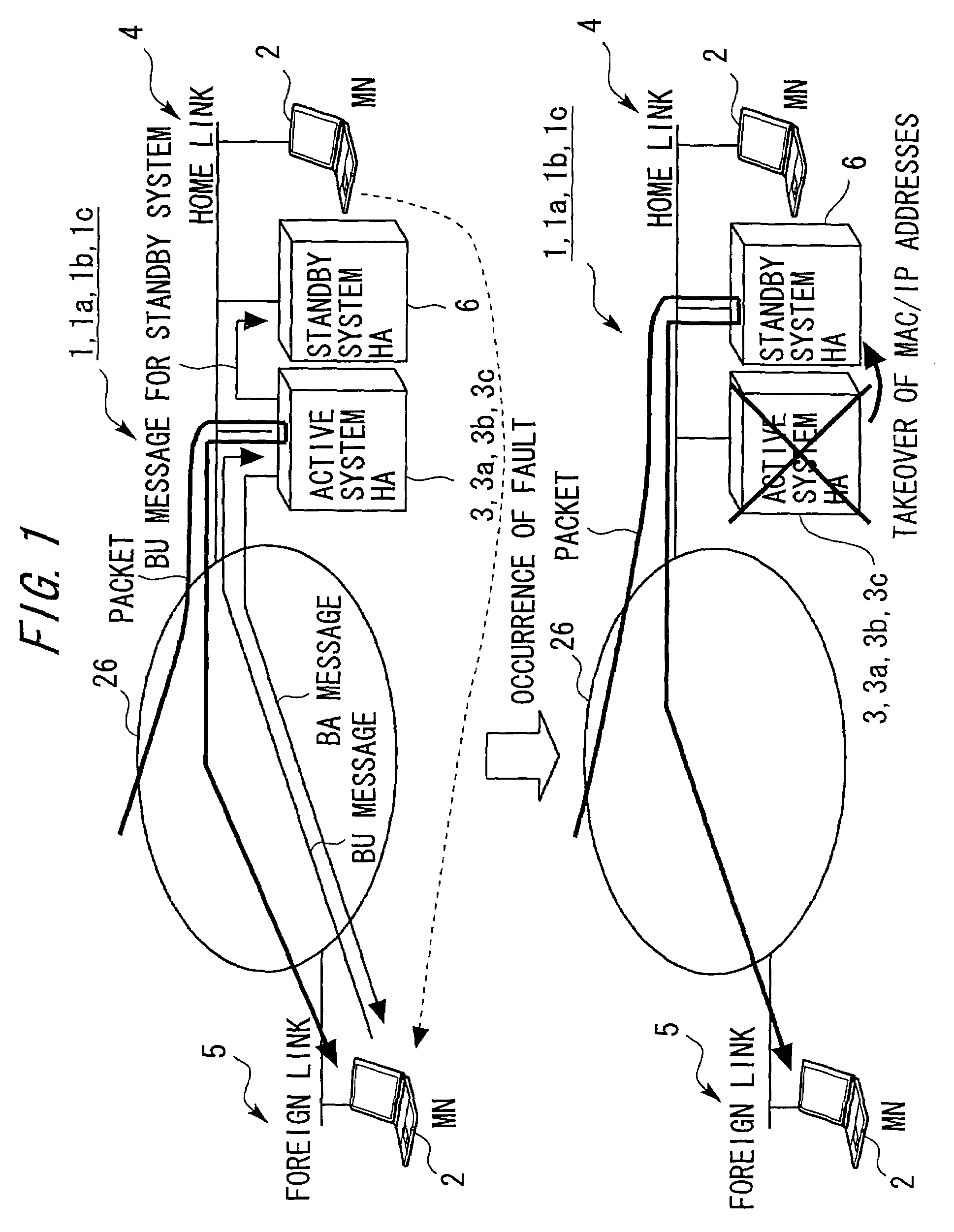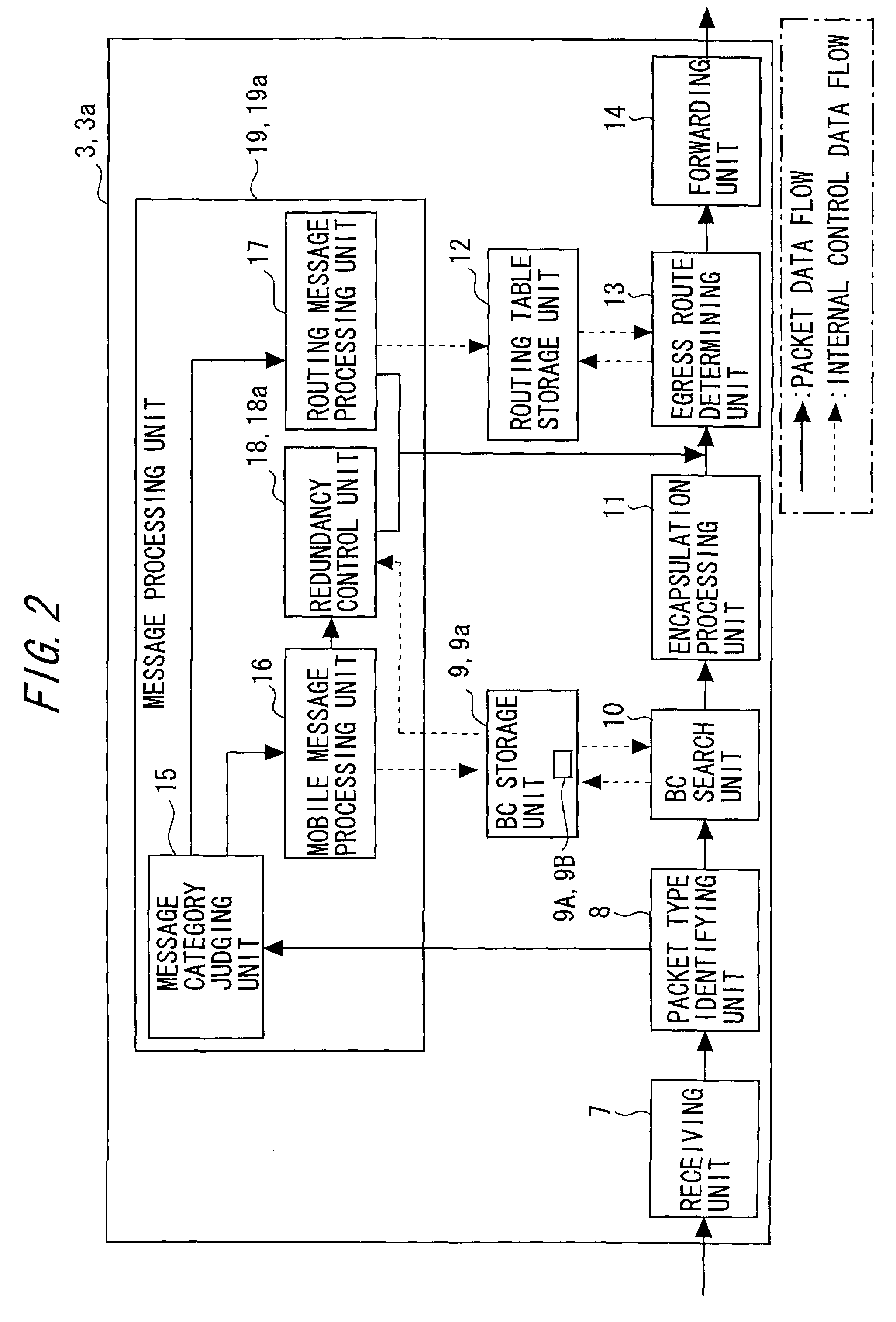Routing system
a routing system and routing device technology, applied in the field of routing systems, can solve the problems of reducing the service interrupt time in the routing device, and shortening the judgment period
- Summary
- Abstract
- Description
- Claims
- Application Information
AI Technical Summary
Benefits of technology
Problems solved by technology
Method used
Image
Examples
first embodiment
[0066][[Outline Architecture of System]]
[0067]FIG. 1 is a view showing an outline architecture of a packet routing system 1 in a first embodiment of the present invention. The packet routing system 1 includes a mobile node 2, an active system home agent (HA) 3, a home link 4, a foreign link 5, a standby system home agent (HA) 6 as a standby system HA, and a network 26 that connects the home link 4 and the foreign link 5 so as to be communicable with each other.
[0068]According to the packet routing system 1, the active system HA 3 forwards a BU (Binding Update) message received from the mobile node 2 to the standby system HA 6, thereby scheming to take synchronization among contents of BC (Binding Cache) tables. An architecture of each of the components will hereinafter be explained.
[0069]
[0070]The mobile node 2 is configured by use of a mobile information processing device. This type of information processing device is exemplified such as a PDA (Personal Digital Assistant), a cellul...
second embodiment
[0129][[System Architecture]]
[0130]Next, a packet routing system 1a in a second embodiment of the present invention will be discussed (see FIG. 1). The packet routing system 1a includes substantially the same components as those of the packet routing system 1 in the first embodiment. To be specific, the packet routing system 1a includes the mobile node 2, an active system home agent (HA) 3a, the home link 4, the foreign link 5, the standby system HA 6, and the network 26 that connects the home link 4 and the foreign link 5 so as to be communicable with each other.
[0131]According to the packet routing system 1a, the active system HA 3a, with a priority flag attached to the BU message, judges based on this priority flag whether the BU message received from the mobile node 2 is forwarded or not. The following discussion on the packet routing system 1a will be focused on only different components from the packet routing system 1.
[0132]
[0133]The active system HA 3a includes a BC storage ...
third embodiment
[0150][[System Architecture]]
[0151]Next, a packet routing system 1b in a third embodiment of the present invention will be discussed (see FIG. 1). The packet routing system 1b includes substantially the same components as those of the packet routing system 1 in the first embodiment. To be specific, the packet routing system 1b includes the mobile node 2, an active system home agent (HA) 3b, the home link 4, the foreign link 5, the standby system HA 6, and the network 26 that connects the home link 4 and the foreign link 5 so as to be communicable with each other.
[0152]According to the packet routing system 1b, the active system HA 3b sets statistic information mapping to the BU message, and judges based on the statistic information whether the BU message received from the mobile node 2 is forwarded or not. The following discussion on the packet routing system 1b will be focused on only different components from the packet routing system 1 in the first embodiment.
[0153]
[0154]FIG. 10 ...
PUM
 Login to View More
Login to View More Abstract
Description
Claims
Application Information
 Login to View More
Login to View More - R&D
- Intellectual Property
- Life Sciences
- Materials
- Tech Scout
- Unparalleled Data Quality
- Higher Quality Content
- 60% Fewer Hallucinations
Browse by: Latest US Patents, China's latest patents, Technical Efficacy Thesaurus, Application Domain, Technology Topic, Popular Technical Reports.
© 2025 PatSnap. All rights reserved.Legal|Privacy policy|Modern Slavery Act Transparency Statement|Sitemap|About US| Contact US: help@patsnap.com



